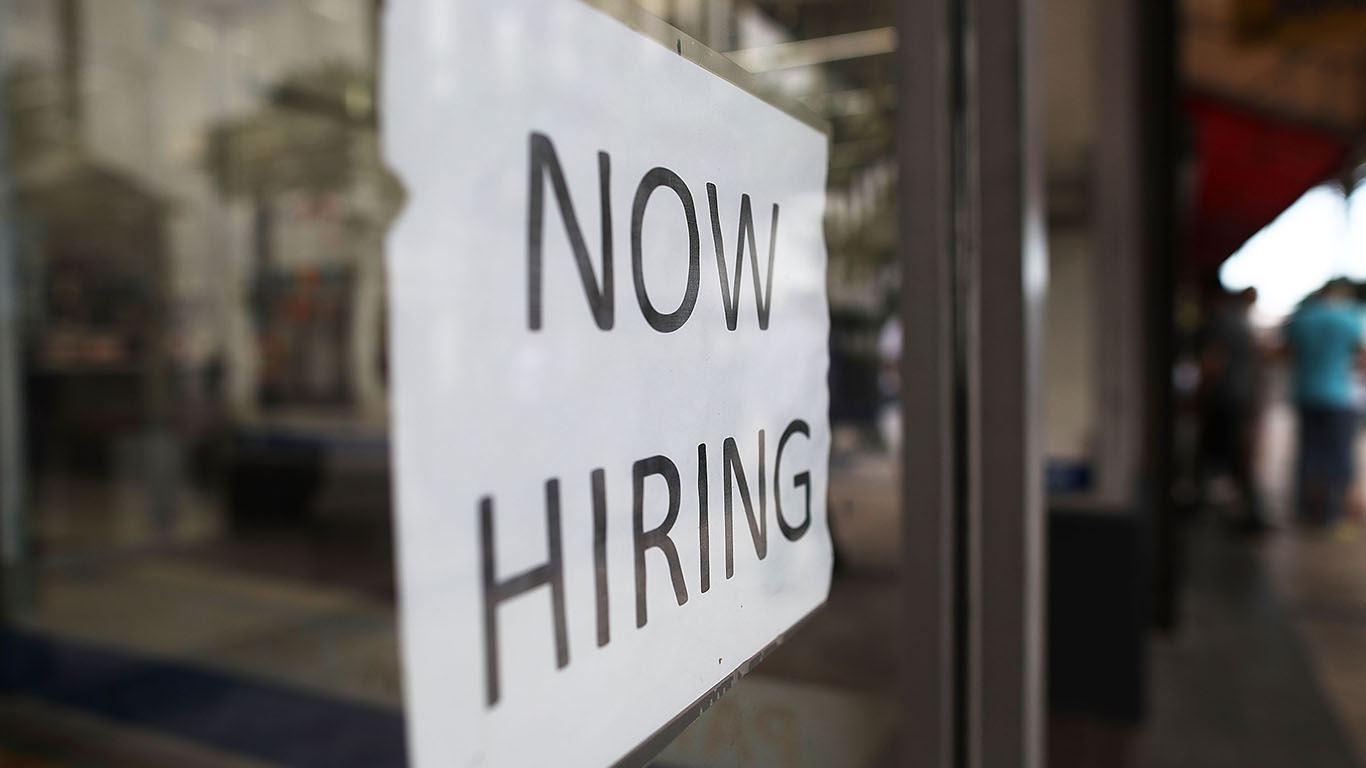Economy
What the 50-Year Record Unemployment Headlines Didn't Tell You

Published:
Last Updated:

It’s easy to get excited about unemployment and the economy when you hear that unemployment is at the lowest level since 1969, the economy is booming and wages are growing. Unfortunately, there is a lot behind the numbers, and just reading the headlines on this report is ill-advised. It was a positive report, but there are some downstream issues that simply should not be ignored.
The U.S. Department of Labor reported on Friday that nonfarm payrolls grew by only 134,000 in September. That was about 50,000 short of expectations, and the lowest growth in months. Sure, there was a hurricane to consider. But one issue that also may have worked against the number was that the two prior months’ reports were revised higher by a combined total of 87,000 jobs. Verdict: if you included the revisions, the number was more or less in-line with expectations.
Unemployment was only 3.7% in September. That’s down from 3.9% in August and was the lowest since December of 1969, when the Labor Department was tabulating people with pencils and paper and using an abacus. The estimate from The Wall Street Journal was 3.8%.
Also worth noting was that the Labor Department counted some 276,000 people who could not work during the reference week due to weather reasons. Thanks a lot, Florence!
The U6 rate, the so-called underemployment rate, went up 0.1 points from August to 7.5% in September.
In the war of employers versus labor, labor is getting its turn, and if it continues it’s going to bite into corporate profits and margins. This is no complaint; it’s just math. Average hourly earnings rose by 0.3% in September and hourly earnings were up 2.8% from September of 2017. The reading on the year-over-year basis was 2.9% in August. And looking forward, think about all the fresh announcements from Walmart, Amazon and others who have raised their minimum wages in recent weeks and months. This translates to higher payrolls ahead as more and more retailers and mom-and-pop shops are forced to lift wages for employees whether the local minimum is lower or not.
Now let’s look at the numbers on an average hourly rate in raw dollars now compared with prior years. Total private sector jobs are averaging a rate of $27.24 per hour as of September. That’s up from $26.51 in September of 2017. At the end of 2012, average hourly earnings were $23.73, and they were $23.25 at the end of 2011.
The average hourly workweek was flat 34.5 hours in September. This number just has not changed much through time.
Another measurement is the number of long-term unemployed, which is a list of workers who have been jobless for 27 weeks or more. These people accounted for 22.9% of all unemployed people and were roughly 1.4 million people in September.
Employment showed little or no change over the month in major industries such as wholesale trade, retail trade, information, financial activities and government jobs. Here was the breakdown of industries and sectors with the big changes in numbers of jobs in September:
Among the major worker groups, the unemployment rates were shown as follows:
As you can see, there are many issues behind the numbers that you just don’t get in the headlines. Fortunately, most of the numbers are still looking quite positive for the economy and for the labor market in general.
Retirement can be daunting, but it doesn’t need to be.
Imagine having an expert in your corner to help you with your financial goals. Someone to help you determine if you’re ahead, behind, or right on track. With SmartAsset, that’s not just a dream—it’s reality. This free tool connects you with pre-screened financial advisors who work in your best interests. It’s quick, it’s easy, so take the leap today and start planning smarter!
Don’t waste another minute; get started right here and help your retirement dreams become a retirement reality.
Thank you for reading! Have some feedback for us?
Contact the 24/7 Wall St. editorial team.